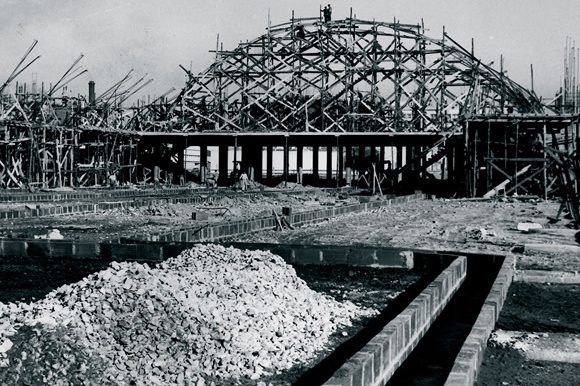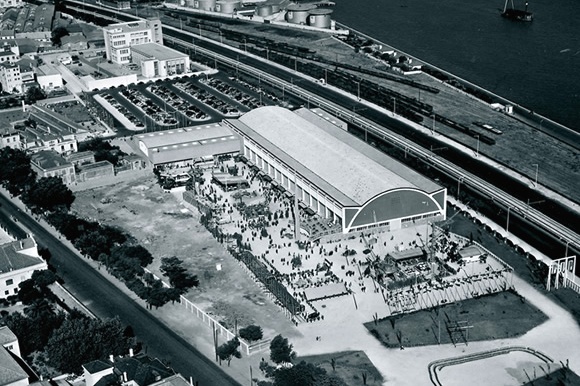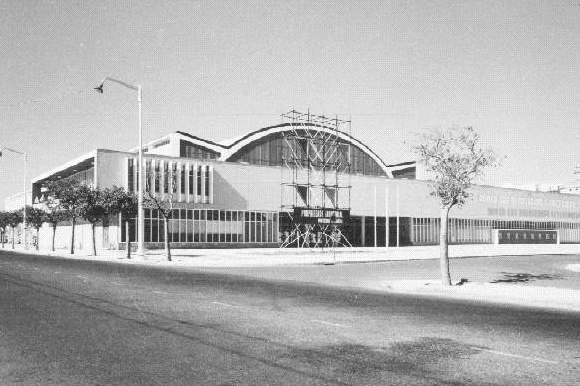History
A history of success
The aspiration to build a pavilion in Lisbon specifically for the purpose of regularly presenting the Portuguese Industries Fair was born of the success of the first expos in 1949-50 and 1951. The success of these events had one particularly important consequence on two fronts: firstly, it became clear that continuing the fair was crucial the relaunch of the Portuguese industry post war; secondly, it was also clear that the fairs could no longer be held in Lisbon’s Belém-neighbourhood location, due to degradation of the space itself. It was deemed critical to construct functional and permanent facilities.
Construction, thus, began in mid-March of 1955.
The main building — the current Pavilhão do Rio (The Rio Pavilion) — was inaugurated on May 26, 1957, with the II Portuguese Industry and Economists Congress and the Portuguese Industry Fair. Later, it was designated as “Lisbon’s Architectural Heritage”.
The City of Lisbon guaranteed concession of the vast Junqueira land, consisting of 35,000 square meters of land between Rua da Junqueira and Avenida da Índia (Junqueira Street and India Avenue, respectively). The pavilion and all annex work were mapped out in a project drawn up by the architects Francisco Keil do Amaral and Alberto Cruz, with technical direction and planning of construction work assigned to engineer Justino Cruz.
CCL – The Lisbon Congress Centre has its origins, thus, in the FIL’s first two auditoriums (former Auditoriums V and VI) with 250 and 100-person capacity, respectively, designed to accommodate activities parallel to the fairs and expos.
In 1984 and 1985, current Pavilions 4 and 5 were constructed, aimed at housing themed expos and augmenting the FIL – The Lisbon Exhibition and Congress Centre exposition area.
In 1989, the Pavilhão Polivalente was finished, later designated as auditoriums at FIL’s Fairs Complex, currently CCL.
This infrastructure, which consisted of 4 auditoriums and 5 meeting rooms, with combined use of the other FIL pavilions, was a decisive factor in the sustained growth of business tourism in Lisbon and hosted the biggest and most prestigious international events held in Portugal in the last two decades.
The growth in activities at CCL was particularly notorious starting in 1995, going from 120 events and a total of 55,000 participants that year to 250 events in 1999, and a total of 180,000 participants. This growth was fundamental in positioning Lisbon among the world’s most sought-after destinations for international conferences and meetings.
With FIL’s move to its new location in the Parque das Nações neighbourhood in 1999, it was suddenly possible to increase schedule availability. CCL had gained 3 more pavilions, corresponding to a total of 10,000 square meters, in order to host large-scale events in properly equipped facilities, moving forward the project of equipping Lisbon with a large, modern conference centre through remodeling and expansion of its current facilities.
In 2003, the so-called “new module”, a new area consisting of 3 more auditoriums and 5 meetings rooms, was inaugurated. It featured modern architectural design and western-facing access to the new conference square, recently inaugurated in the summer of 2022 with the opening of the new Hotel Hyatt Regency.


